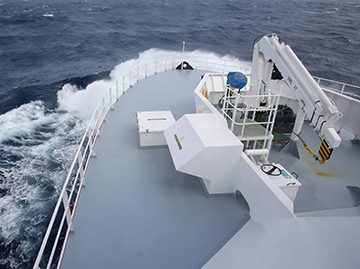
Recent news reports about the search for MH370 have included highly inaccurate assertions about the search and how it is being conducted.
The ATSB strongly refutes assertions that Fugro Survey Pty Ltd was not the best choice to undertake the underwater search or that the search methods are ineffective. The search is being carried out to the highest standards of effectiveness and quality.
“These attacks are unfounded and unfair”, said Chief Commissioner Martin Dolan. “The search for MH370 represents thousands of hours of work by hundreds of people who are dedicated, expert and professional. They are fully committed to finding the aircraft.
“The opportunity to tender services for the search for MH370 was open to the international underwater search industry. We received a number of tenders which encompassed a range of different capabilities and methods. A comprehensive and exhaustive evaluation process was conducted in line with strict Australian Government procurement and probity rules.
“I am very conscious that we must use taxpayers’ money responsibly. Fugro’s bid represented the best value for money and demonstrated that they could capably manage the technical aspects of this challenging search operation and deliver the necessary results.”
Fugro has been involved with numerous aircraft and helicopter search and recovery operations since the 1980s. They have been using the Edgetech Deeptow side-scan sonar systems since the mid-90s and have one of the largest commercial AUV fleets in the world for performing commercial surveys in deep water.
Their ability to detect man-made objects on the seafloor in ultra-deep water is evidenced by the recent detection of a previously unknown shipwreck.
“The debris in the shipwreck field was significantly smaller, and therefore harder to detect, than we expect to find with MH370,” Chief Commissioner Dolan said.
“The ATSB has put in place systems of review and expert quality assurance so we can be certain that the quality of search data meets the high standards we have specified,” said Chief Commissioner Dolan. “We selected Fugro on their capacity to meet those standards.”
As part of its quality assurance process, the ATSB has enlisted the expertise of Sherrell Ocean Services founded by Andrew Sherrell, one of the leading sonar search specialists in the world, who has worked on a number of commercial air investigations, including the search and recovery of Air France 447, TWA 800, and Egypt Air 990.
Mr Sherrell has been involved as the Quality Assurance Manager in many elements of the search for MH370, beginning with the tender process and continuing with the planning of the search and review of the gathered sonar data. Mr Sherrell said he is confident that the appropriate technology is being used.
“The equipment was tested thoroughly in ocean trials at a purpose-built test range to ensure the maximum swath width without compromising the detection capability. Fugro’s faster-than-average tow speed enables them to scan significant amounts of sea floor per operational day. As a result, we are seeing substantial coverage with the required level of resolution,” said Mr Sherrell.
“We have a rigorous and thorough quality assurance program that ensures appropriate overlap between adjacent swaths and positioning of each line as well. We are achieving very accurate and consistent results with a new state-of-the-art positioning system that gives us full confidence in the towfish position, even 9km behind the vessel.
“Furthermore, we verify this system by using the accurate bathymetry maps collected during Phase 1 of this search. By matching specific features on the seafloor, we can ensure that the positions being calculated are correct, and we do this for every single line of data collected. We also perform feature matching with the side scan sonar data between adjacent lines to ensure sufficient overlap of data is maintained. This is also done on every line as it is collected, with any deficiencies documented and catalogued.
“In addition, Fugro are using multibeam sonar to supplement the side scan sonar equipment; this covers the traditional “nadir” gap directly below the towfish. The multibeam ensures more complete coverage of the seafloor it passes over. This is optimising our rate of progress, and is a feature that is not available on some older systems that are still in use by other organisations.”
Without this type of system, a much higher percentage of seafloor would need to be covered twice to fill in this missing data. Duplicating coverage of the seafloor not only increases the cost of the search, but also the time required to cover the search area. Using a multibeam sonar in this way is a very efficient technique for covering large areas of seafloor.
“The challenges remain,” Chief Commissioner Dolan said. “The search zone is remote, the weather and sea conditions are difficult, and the search area is vast, but I’ve never had any doubt about the capabilities of Fugro, their commitment to the mission or their professionalism.”
Learn more about The search for MH370


